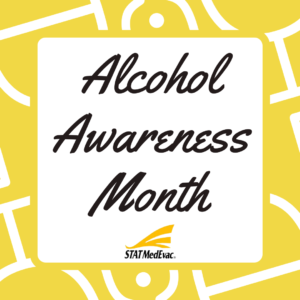
This month we raise awareness and understanding about alcohol abuse and its impact on your health. More than 140,000 people die every year from alcohol misuse, making it one of the leading causes of preventable deaths.
The National Council on Alcoholism and Drug Dependence started Alcohol Awareness Month in April of 1987 with the intention of targeting college-aged students who might be drinking too much, as part of their newfound freedom while away at school. It has since become a national movement to draw more attention to the stigma surrounding alcoholism and how to help families and communities deal with drinking problems. For many, denial is a common trait, with underestimating the amount they drink, the duration of their drinking problem and the impact that it has on their lives. Denial also comes into play for families and friends who are uncomfortable acknowledging the reality of the situation.
Over time, excessive alcohol consumption can lead to the development of chronic diseases and other serious issues that can affect your quality of life, including physical and mental health. According to the National Institute on Alcohol Abuse and Alcoholism, alcohol misuse is linked to more than 200 diseases and injury-related conditions. Something to also consider, alcohol misuse contributes to health care costs. Sited by the American Addictions Center, drinking-related costs reached an estimated $249 billion in the U.S..
According to the Dietary Guidelines for Americans, adults of legal drinking age should limit themselves to 2 drinks or less in a day for men and 1 drink or less in a day for women; with the exception of pregnant women and adults who are on certain medications. A drinking pattern includes 5 or more drinks on a single occasion, or a consumption that brings your blood alcohol concentration level to 0.08% or more.
If you think you need help with alcohol abuse, or know someone who may need assistance, there are resources to help. To find more reading material, please visit UPMC’s website for more information: https://www.upmc.com/health-library/article?hwid=tk2275.
